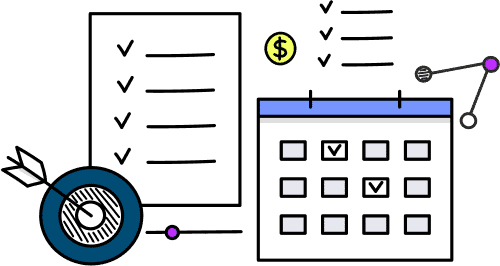Cash flow stability is the lifeblood of any small business. Yet, even the most successful businesses deal with drops in revenue and unexpected expenses that can strain operations. Financing, then, can serve as a valuable tool to stabilize cash flow and maintain business operations. Let’s explore the various types of financing available to small businesses, strategies for leveraging them effectively, and the importance of prudent financial management to ensure long-term success.
What is Stable Cash Flow?
Cash flow is the movement of money in and out of a business, representing the inflow and outflow of funds. Maintaining a stable cash flow is essential for covering day-to-day operations, paying suppliers, covering payroll, and investing in growth opportunities. But as any small business owner knows, revenue streams can be unpredictable, and unexpected expenses can come up at the worst times. Without adequate cash reserves, businesses may struggle to weather financial downturns or capitalize on growth opportunities. This is where loans come into play, providing businesses with access to capital when cash flow is tight.
Loans for Cash Flow Needs
Small businesses have a range of loan options to choose from, each tailored to different financial needs and circumstances. Traditional bank loans are a common choice, offering lump-sum financing with fixed interest rates and repayment terms. These loans are suitable for long-term investments such as expanding operations or acquiring real estate.
Small Business Administration (SBA) loans, backed by the federal government, provide businesses with access to affordable financing and flexible terms, making them an attractive option for younger and established businesses alike.
Additionally, alternative lending options such as revenue-based financing and invoice factoring offer quick access to capital based on future revenue or accounts receivable, respectively. While these options may come with higher fees and shorter repayment terms, they can be useful for businesses in need of immediate cash flow to take advantage of an opportunity that would produce enough revenue to cover the cost of the financing while still providing the business with a profit.
Using Your Business Loan Effectively
When considering taking out a loan to stabilize cash flow, small business owners should think wholistically. First, it’s essential to assess the business’s financial needs accurately and identify the best type of loan for the situation. Conducting thorough research and comparing loan products from multiple lenders can help secure favorable terms and conditions. Additionally, businesses should develop a comprehensive repayment plan that aligns with their cash flow projections and revenue streams. By understanding the cost of borrowing and the impact on cash flow, businesses can make informed decisions and avoid overextending themselves financially.
Business owners should prioritize active financial management practices to maximize the benefits of loans and ensure long-term sustainability. This includes maintaining accurate and up-to-date financial records, monitoring cash flow regularly, and implementing effective budgeting and forecasting techniques. By staying proactive and disciplined in financial management, businesses can anticipate potential cash flow challenges and take proactive measures to address them before they escalate into larger issues.
Managing Cash Flow
While loans can provide a temporary solution to cash flow challenges, they often are not a substitute for sound financial management practices. Small business owners must prioritize prudent financial management to ensure the long-term success and sustainability of their ventures. This includes maintaining healthy cash reserves, managing expenses effectively, and diversifying revenue streams to minimize reliance on any single source of income. Additionally, businesses should prioritize building strong relationships with lenders and suppliers, as well as maintaining open communication with stakeholders to navigate financial challenges effectively.
Keeping Your Cash Flow Flowing
Leveraging loans can be a strategic approach for small businesses to stabilize cash flow and maintain operations during periods of uncertainty or even growth. Whether through traditional bank loans, SBA loans, or alternative lending options, businesses have access to a variety of financing solutions tailored to their unique needs and circumstances. However, it’s essential for business owners to approach borrowing responsibly and adopt financial management practices to ensure long-term success. By understanding the importance of cash flow stability, exploring available loan options, and implementing effective strategies, small businesses can navigate financial challenges with confidence and position themselves for sustainable growth and prosperity in the years to come.
Brandon Wyson
Content Writer
Brandon Wyson is a professional writer, editor, and translator with more than nine years of experience across three continents. He became a full-time writer with Kapitus in 2021 after working as a local journalist for multiple publications in New York City and Boston. Before this, he worked as a translator for the Japanese entertainment industry. Today Brandon writes educational articles about small business interests.
Read More Articles >>


